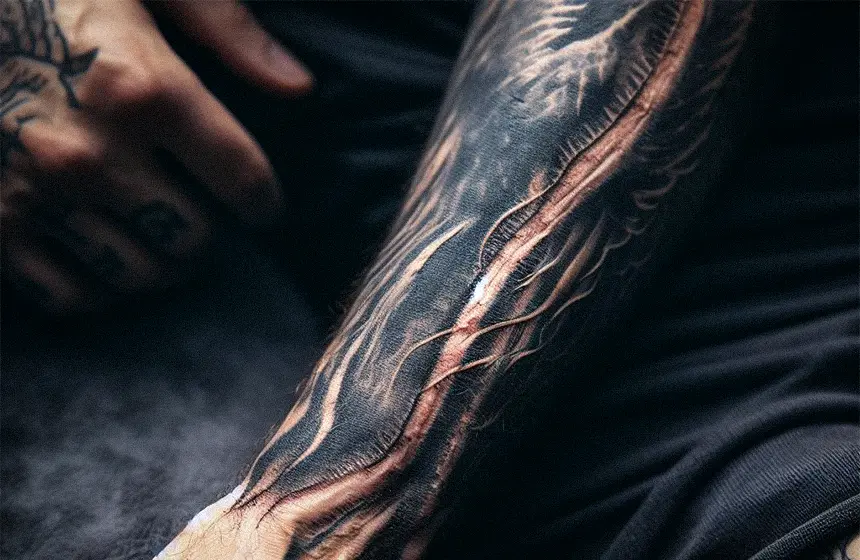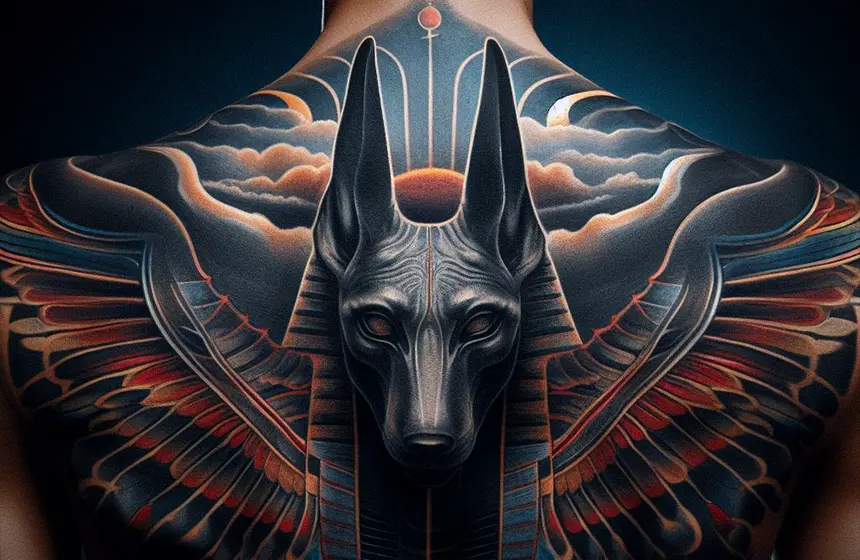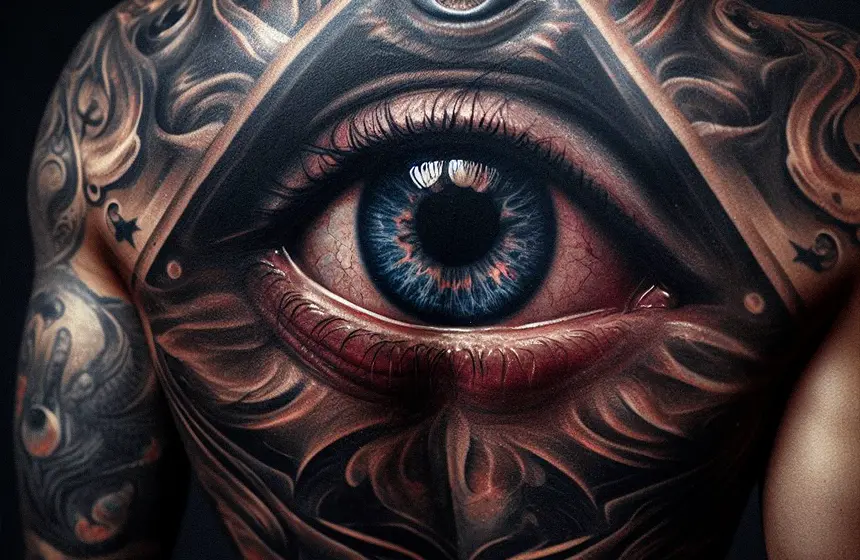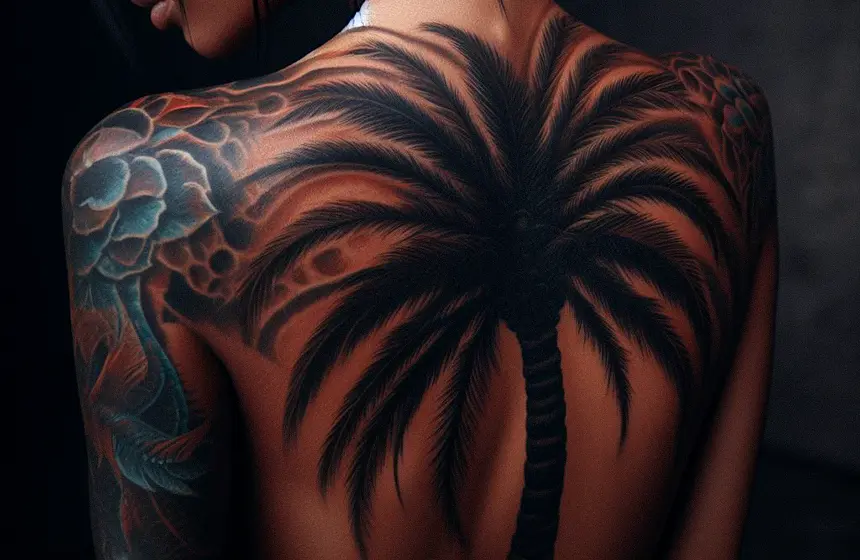I’m often asked, Can you tattoo over scars?
I’m here to say, yes, you can! But it’s more complex than you might think.
From pain tolerance to scar tissue unpredictability, it’s a process with unique challenges. Whether you’re reclaiming your body or boosting self-confidence, this personal choice requires careful consideration. Let’s dive into the art of tattooing over scars together.
Table of Contents
Key Takeaways
- Tattooing over scars can help individuals reclaim their body and self, especially those who are dissatisfied with their appearance or want to cover reminders of traumatic events or health issues.
- Scar tissue is generally more painful to tattoo, especially keloid, atrophic, hypertrophic, and burn scars, as well as deep or extensive scars.
- Tattooing over scars can cause more scarring, especially for individuals prone to keloid scars, and scarred skin may have difficulty absorbing ink properly.
- When considering tattooing over scars, it is vital to find a reputable tattoo artist with experience in covering scars, research their past work, and discuss design ideas to ensure a successful outcome.
Tattooing Over Scars: An Overview

Tattooing over scars is a delicate process that requires careful consideration and planning. It’s crucial to understand the challenges and complexities involved, including pain considerations, additional complications, and the potential impact on the tattoo’s appearance. Furthermore, finding a professional and experienced tattoo artist is vital in ensuring a successful and satisfying result.
Introduction to Tattooing Over Scars
When you’re considering getting a tattoo over a scar, there’s a lot to consider. It’s not just about choosing the right design but also understanding the pain considerations, the impact on the scar’s appearance, and finding a reputable tattoo artist.
Here’s a quick overview:
| Consideration | Key Points | Relevance |
|---|---|---|
| Pain | Scar tissue is generally more painful to tattoo. The level of discomfort varies with the type and severity of the scar. | It’s important to be prepared and discuss pain management options with your artist. |
| Appearance | Tattooing can transform the scar’s appearance, but absorption of ink may be limited, resulting in smudged or unclear tattoos. | A skilled artist can offer solutions and design ideas to enhance the final outcome. |
| Tattoo Artist | A reputable tattoo artist experienced in scar cover-ups is crucial. | Their expertise can help minimize risks and achieve a satisfying result. |
The Challenges and Considerations
There are numerous challenges and factors to consider. The process is more complex than tattooing unscarred skin.
Scars can be more painful to tattoo, for instance, intense, large or keloid scars. The artistry can also be challenging, as scarred skin absorbs ink slowly, often resulting in smudged or unclear tattoos.
Some scars, like stretch marks or acne scars, can be difficult to cover smoothly. And there’s always the risk of causing more scarring, especially for those prone to keloid scars. Despite these challenges, with the right artist, design, and preparation, it’s possible to transform these reminders of past traumas into something beautiful and truly personal.
The Role of a Professional Tattoo Artist
As someone looking to tattoo over a scar, I can’t stress enough the importance of finding a reputable, experienced tattoo artist to handle this unique task.
A professional tattoo artist can effectively navigate these complexities, resulting in a meaningful, beautifully crafted piece of art. They can also provide valuable advice on design choices that would best complement the specific nature of the scar. A seasoned artist prioritizes hygiene and safety, significantly reducing the risk of infection.
Assessing Scars for Tattoo Suitability

Before considering a tattoo over a scar, it’s essential to identify the type of scar you have, as not all scars are suitable for Tattooing. Understanding the difference between, for instance, keloid scars and stretch marks can significantly impact the success of the tattoo. It’s also crucial to consult with a knowledgeable tattoo artist who can guide you on the feasibility and design options for your specific scar.
Types of Scars That Can Be Tattooed Over
When it comes to tattoo readiness, not all scars are created equal, and it’s vital to assess the type and severity of your scar before heading to the tattoo shop. Generally, flat and pale scars are the best candidates as they’ve had enough time to heal and are less sensitive. These include surgical scars and those from minor injuries. However, hypertrophic scars that are raised and red can also be tattooed as long as they’re not prone to keloids. Atrophic scars, like those from acne or chickenpox, present a unique challenge but are not impossible to work with. Burn scars and deep scars from severe injuries need careful evaluation. It’s critical to consult with a professional tattoo artist for an accurate assessment. They’ll guide you in transforming your scar into a piece of art.
Identifying Scars That Are Not Suitable
While it’s true that many types of scars can be successfully tattooed over, some aren’t suitable for this form of transformation, and I’m here to help you identify them. Keloids, for instance, are a no-go zone. They’re raised, often shiny, and can lead to further scarring if tattooed. Similarly, burn scars are usually too sensitive for the process, and the irregular skin texture can result in an unclear tattoo image.
Also, it would be best if you considered the age and stability of your scar. Fresh, red scars aren’t ready; they’re still healing and changing. Instead, wait until they’re fully recovered and whitened. This usually takes about a year. Tattoos are an art of transformation, but it’s essential to know when it’s not advisable.
Consultation with a Tattoo Artist
Despite the challenges associated with tattooing over certain types of scars, as discussed in the previous section, it’s during a consultation with a tattoo artist that we can assess the suitability of your scar for a tattoo. It’s crucial to find a skilled artist experienced in scar camouflage, as they can evaluate your scar’s texture, size, location and age to determine tattoo feasibility. Some scars may be too sensitive or textured to hold ink effectively. During this consultation, your artist will also discuss potential designs that can artfully incorporate your scar, offering an innovative solution to body art. Remember, it’s not merely about masking a scar but transforming it into something beautiful. Always discuss your expectations and concerns to ensure a successful outcome.
Consultation and Preparation
Before embarking on the journey of tattooing over scars, there are vital preparatory steps one must consider. The process starts with a consultation with an experienced tattoo artist, during which you’ll discuss designs that can effectively cover or incorporate your scar. Preparing your skin and scar for the tattooing process is another crucial step that will be explored.
Meeting with a Tattoo Artist
Once you’ve decided to get a tattoo over a scar, it’s crucial to find a skilled artist and prepare for your consultation. Do your research to find an artist experienced in tattooing over scars. Look at their past work, ask about their experience, and ensure their shop maintains high cleanliness standards.
During the consultation, be open about your expectations and apprehensions. Discuss your design ideas, but remain open to the artist’s suggestions. They’ll have insights into what designs work best over different types of scars. Also, ask about the pain level to anticipate and what aftercare will look like. This meeting is your opportunity to establish trust and ensure you’re comfortable before embarking on this transformative journey.
Designing a Tattoo for Scar Coverage
After meeting with a skilled tattoo artist, I’m now ready to delve into the process of designing a tattoo that will effectively cover my scar. The first step is to thoroughly discuss and understand the artist’s approach towards scar coverage. An innovative, customized design that augments the scar’s shape and position is crucial. The artist should be able to incorporate the scar into the artwork elegantly, ensuring it becomes a seamless part of the design. I’ve also learnt that the scar’s age and type can influence the tattoo’s outcome. A healed, flat scar provides the best canvas. Finally, the artist and I will discuss the optimal colour palette to ensure the tattoo will not only cover my scar but also enhance my overall aesthetic.
Skin and Scar Preparation
In preparation for my tattoo, it’s crucial to consult with the tattoo artist about the state of my skin and scar. They must examine and assess the area to determine if it suits Tattooing. It’s important to discuss the scar’s age, as fresh scars are not ideal for Tattooing. Usually, a scar must be at least a year old. Also, the type of scar I have might affect the tattooing process. For instance, keloid scars can be challenging due to their raised nature. The artist’s expertise is vital in managing such complexities. After the consultation, the preparation phase commences. This involves cleaning and moisturizing the skin to enhance its condition, readying it for the tattoo process. A well-prepared canvas ensures the best possible result.
The Tattooing Process
Now, we’re moving on to the actual process of tattooing over scars. This entails understanding the unique techniques for scar coverage, the complexities of dealing with scar tissue, and how to manage pain for a comfortable experience. Each aspect plays a crucial role in achieving a successful scar coverage tattoo.
Tattooing Techniques for Scar Coverage
Understanding the various tattooing techniques for scar coverage is crucial for anyone considering this transformative process. As an artist, I’ve honed my skills to navigate the unique challenges presented by scars. Blending or incorporating scars into the design often produces the most aesthetically pleasing results. For deep or textured scars, I employ a technique called ‘tattoo camouflage’, using coloured ink to mimic the surrounding unscarred skin. This requires a keen understanding of skin tones and a nuanced application process. It’s also paramount to remember that scarred skin can react differently to the ink, potentially leading to a longer healing process. Lastly, I always maintain a dialogue with my clients regarding pain management, ensuring a comfortable and empowering experience.
Dealing with Scar Tissue
After mastering the various techniques for tattooing over scars, I will delve into the specifics of dealing with scar tissue during the tattooing process. It’s crucial to understand that scar tissue differs from regular skin – it’s less elastic, contains fewer blood vessels, and is often sensitive. One of the key challenges I face is that the ink may not distribute evenly within scar tissue, causing the tattoo to look blurred or patchy. Scarred skin is also more prone to bleeding, further complicating the process. Despite these challenges, innovative techniques and advanced tattoo tools have made it possible to create beautiful, impactful tattoos over scars. Each process is unique and requires a personalized approach, combining artistic creativity with a deep understanding of human anatomy.
Pain Management and Comfort
As I navigate the complexities of tattooing over scar tissue, it’s vital to consider the pain management and comfort aspects during the process. Tattooing scars can be more painful than unscarred skin, primarily due to the nature of scar tissue, which is more sensitive. If you’re dealing with deep or extensive scarring, the discomfort may intensify. However, pain is highly subjective and varies from person to person. To manage this, talking with your tattoo artist about pain mitigation strategies is vital. Topical anaesthetics, distractions, or even taking breaks can be part of your strategy. Remember, it’s okay to prioritize comfort. After all, the process of transforming your scars into art should not only be about the result but also your journey towards healing and self-expression.
Tattoo Aftercare for Scarred Skin
After the tattooing process, special care must be taken to ensure optimal healing, especially when dealing with scarred skin. Understanding the intricacies of healing and aftercare can help minimize the risk of complications and promote a vibrant, lasting result. Let’s explore some important considerations and practical tips for aftercare when you’ve chosen to tattoo over scars.
Special Considerations for Tattooed Scars
When you’ve got a tattoo over scarred skin, there’s a unique set of aftercare considerations to remember. The healing process may take longer as scar tissue tends to be less resilient. It’s crucial to keep the tattooed area clean and moisturized to avoid infection. Sun exposure should be minimized as it can lead to fading and damage. Also, be patient with the ink absorption process. Scarred skin can sometimes cause the tattoo to look smudged initially. However, with proper care and time, it should eventually settle in. Remember, everyone’s skin reacts differently, so what works for others might not work for you. Consult a professional tattoo artist to ensure you do what’s best for your skin.
Healing and Aftercare Tips
Often, I’ve noticed that the healing process for tattoos on scarred skin requires more attention and time compared to tattoos on unscarred skin. Hydration is critical; I can’t stress enough the importance of drinking plenty of water and moisturizing the area with a product recommended by your tattoo artist. You’ll also want to avoid sun exposure, which can not only fade the tattoo but potentially lead to further skin damage. It’s essential to keep the area clean, but avoid soaking it in water. Showers are fine, but baths, swimming pools, and hot tubs should be avoided until the area is fully healed. Lastly, remember that healing times can vary. Don’t rush the process; your patience will pay off with a vibrant, meaningful piece of art.
Minimizing the Risk of Complications
It’s crucial to follow a specialized aftercare regimen for tattooed scarred skin. Firstly, cleanliness is paramount. Wash the tattooed area gently with mild, unscented soap and pat dry. Avoid scrubbing the area to prevent irritation. Apply a thin layer of healing ointment, such as Aquaphor or a product recommended by your tattoo artist. Avoid using products that contain alcohol or fragrances, as they can cause further damage. Keep the tattooed skin moisturized and protected from sun exposure.
Also, avoid picking or scratching the area, leading to infections or prolonged healing. It’s also essential to stay hydrated and maintain a healthy diet to support your body’s healing process. Following these steps can help ensure your tattoo heals properly and looks its best.
Tattooing Over Self-Harm Scars
Addressing the topic of tattooing over self-harm scars requires sensitivity and understanding. It’s critical to discuss not just the aesthetic and physical aspects but also the emotional considerations and the role of support in this process. This can be a powerful tool for transformation, turning a painful past into a symbol of personal strength and resilience.
Addressing Self-Harm Scars with Tattoos
In my experience, tattooing over self-harm scars can be a decisive step towards healing and self-love. It’s more than just a cosmetic change; it’s a transformation of a painful reminder into a symbol of resilience. They allow individuals to reclaim their bodies, expressing their journey in a way that’s truly theirs. However, it’s not without challenges. Scar tissue is more sensitive, making the tattooing process potentially more painful.
Additionally, scars can distort the tattoo’s appearance. Therefore, it’s crucial to find an experienced tattoo artist skilled in working with scarred skin. Consultation, discussing design ideas and potential difficulties, is essential. Remember, this is a personal journey, and the final design should resonate with your story.
Emotional Considerations and Support
While the act of tattooing over self-harm scars can be a cathartic and empowering experience, it’s equally important to consider the emotional implications and ensure you have a support system in place. This journey isn’t just about transforming a scar into art and confronting past pain. Therefore, it’s crucial to mentally prepare yourself for the emotional intensity that may accompany this process.
Consider seeking professional guidance or joining support groups where you can share your experiences and gain strength from others who’ve undergone similar journeys. Remember, it’s okay to feel vulnerable. Your tattoo artist should also be understanding and supportive, creating a safe, respectful space where you can feel comfortable. This isn’t just about aesthetics but healing, self-expression, and reclaiming your body.
Encouraging Positive Transformation
Transforming self-harm scars through Tattooing can be a profoundly empowering act, turning a symbol of pain into a unique work of art that reflects one’s journey and resilience. This innovative process allows individuals to reclaim their bodies, dictating their narratives through art. However, it’s important to note that tattooing over scars is a complex task requiring expertise. Scar tissue behaves differently than unscarred skin, potentially affecting the ink’s absorption and tattoo integrity. It’s vital to find an experienced tattoo artist who can skillfully navigate these challenges. Also, pain tolerance varies, so be prepared for potentially intensified discomfort. Ultimately, though, the act of Tattooing can transform a painful reminder into a symbol of survival, strength, and personal growth.
Frequently Asked Questions
What Are the Risks Associated With Tattooing Over Scars?
Sure, tattooing over scars can pose risks. Increased pain and potential further scarring are possible, especially with keloids. Scar tissue may not hold ink well, resulting in unclear or smudged tattoos. It’s a careful decision.
Is There a Possibility That the Tattoo Won’t Hold on Scarred Skin?
Yes, a tattoo might not hold well on scarred skin. Scar tissue absorbs ink differently than unblemished skin, which can result in a smudged or unclear tattoo. It’s a case-by-case scenario.
Can Getting a Tattoo Over a Scar Trigger a Traumatic Memory?
Yes, tattooing over a scar could trigger traumatic memories. It’s a deeply personal experience, and the process might stir up emotions linked to the scar’s origin. It’s crucial to consider this before proceeding.
Does Tattooing Over a Scar Take Longer Than Regular Tattooing?
Yes, tattooing over a scar often takes longer than regular Tattooing. The scar tissue’s unique texture requires extra care and patience from the artist to ensure the ink settles correctly and the design looks good.
Is There a Difference in the Cost of Tattooing Normal Skin Versus Scarred Skin?
In my experience, tattooing over scarred skin costs less than tattooing over normal skin. It’s the artist’s expertise, design complexity, and shop rates that primarily determine the price.
Conclusion
Tattooing over scars can be a powerful way to reclaim your body and transform a reminder of pain into a piece of art. It’s not an easy process, but with the right artist and preparation, it’s certainly achievable. Whether it’s to boost your confidence or to make a statement, always remember it’s your body, your decision. Do your research, prepare yourself, and embrace the journey. Your scar doesn’t define you, but how you wear it does.
Source: https://www.healthline.com/health/body-modification/tattoo-over-scar





